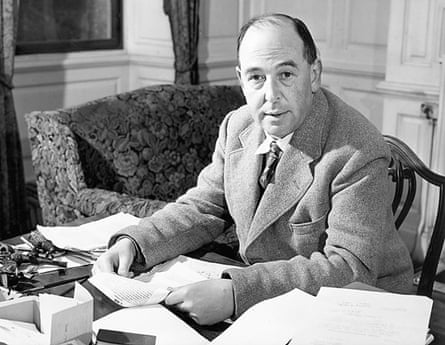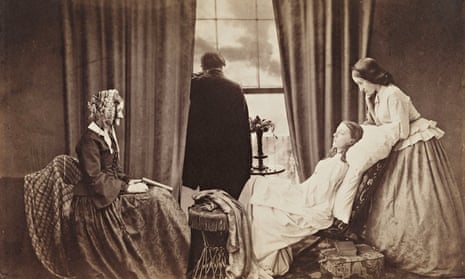“No one ever told me that grief felt so like fear.” With his first line, CS Lewis’s A Grief Observed reacquaints his reader with the physiology of mourning; he brings into each mouth the common taste of private and personal loss. “I know something of this,” you think. Even if you have not experienced a “front line” bereavement, such as the loss of partner, parent or child, you have certainly lost something you value: a marriage or a job, an internal organ or some aspect of mind or body that defines who you are.
Perhaps you have just lost yourself on your way through life, lost your chances or your reputation or your integrity, or chosen to lose bad memories by pushing them into a personal and portable tomb. Perhaps you have merely wasted time, and seethe with frustration because you can’t recall it. The pattern of all losses mirrors the pattern of the gravest losses. Disbelief is followed by numbness, numbness by distraction, despair, exhaustion. Your former life still seems to exist, but you can’t get back to it; there is a glimpse in dreams of those peacock lawns and fountains, but you’re fenced out, and each morning you wake up to the loss over again.
Grief is like fear in the way it gnaws the gut. Your mind is on a short tether, turning round and round. You fear to focus on your grief but cannot concentrate on anything else. You look with incredulity at those going about their ordinary lives. There is a gulf between you and them, as if you had been stranded on an island for lepers; indeed, Lewis wonders whether a grieving person should be put in isolation like a leper, to avoid the awkwardness of encounters with the unbereaved, who don’t know what to say and, though they feel goodwill, exhibit something like shame.
Lewis, now most celebrated as a writer for children, was also one of the great Christian thinkers of the last century. His memoir Surprised by Joy, written before his marriage, is an absorbing account of childhood and a luminous description of his conversion experience. In 1956 he was lured out of his donnish bachelor state by Joy Davidman, an American poet. By his marriage he became stepfather to two boys. His life flowered. But four years later Joy died of cancer.
Born in 1898, educated at a public school, an officer in the first world war, an intellectual, a man who (by his own account) feared the collective and feared the feminine, Lewis found himself plunged into an experience against which intellect could not defend him, a process that is as common as the air we breathe, a process that involves a feminine dissolution into “pathos and tears”.
In his memoir he recalls the death of his mother when he was a small boy. “Grief was overwhelmed by terror” at the sight of her corpse, and he was not helped to mourn, his natural grief subsumed into the violent reactions of adults. The work of mourning, if not performed when it is due, seems to be stored up for us, often for many years. It compounds and complicates our later griefs. The loss of his wife plunged Lewis into a crisis of faith.
Why had she been taken away, when his marriage had made him a more complete human being? As a theologian he would come to credit God with some subtlety, but as a man he must have felt he had been thrown back into the classroom at his prep school, with its routinely hellish regime of arbitrary beatings. He soon saw that mourning kicks away the props we rely on. It confiscates our cognitive assets and undermines our rationality. It frequently undermines any religious faith we may have, and did so in this case. In his 1940 book The Problem of Pain, Lewis tackled what Muriel Spark, in the title of a novel, called The Only Problem: if God is good, why does he permit the innocent to suffer? Lewis had worked over the ground in theory. After his wife’s death he had to do the work again, this time in raw dismay: dismay not only at the terrible event itself, but at his reaction to it. Unless his faith in the afterlife is childish and literal, the pain of loss is often intensified for a believer, because he feels angry with his god and feels shame and guilt about that anger; this being so, you wonder how the idea began, that religion is a consolation.
It is not that Lewis ceases to believe in God. It is that he is horrified at what he suspects about God’s nature. How can one not rebel against such perceived cruelty? Conventional consolations are offered to him, and seem to miss the point. “You tell me ‘she goes on’. But my heart and body are crying out, come back, come back.” The Christian finds himself at heart a pagan, wishing to descend, like Orpheus, into the underworld, to lead the lost person back into the light.
Gradually the shape of loss emerges, but it is complex and ever-changing. Grief gives the whole of life “a permanently provisional feeling”. Sorrow is “a long valley, a winding valley where any bend may reveal a totally new landscape”. The dead person recedes, losing selfhood, losing integrity, becoming an artefact of memory. The process creates panic and guilt; are we remembering properly? Are we remembering enough? A year passes, but each day the loss strikes us as an absolute novelty. When Lewis wrote A Grief Observed, he did not objectify his grief in the language of psychology, but alternated between the terms available to, on the one hand, the spiritual seeker, and on the other hand the stricken child.
Nowadays, most of us have a humanist vocabulary at our command, but sometimes it seems no help at all. In 1969, in her influential book On Death and Dying, Elisabeth Kübler-Ross defined five stages of grief: denial, anger, bargaining, depression, acceptance. The model she created is apt to be misunderstood as a linear model, and can be used, by inept counsellors or half-informed friends, as a way of bullying the bereaved. What, are you stuck? Going round and round instead of forwards? Still mired in “depression”, two years on? Perhaps you need a psychiatrist.

Mechanical efficacy is attributed to the passage of time, but those in mourning know how time doubles and deceives. And though, in Britain, self-restraint is said to have vanished with Princess Diana, sometimes it seems the world still expects the bereaved person to “move on” briskly, and meanwhile behave in a way that does not embarrass the rest of us. In The Year of Magical Thinking, Joan Didion’s memoir of her husband’s death, she writes of our dread of self-pity: Lewis too experienced this. We would rather be harsh to ourselves, harsher than a stranger would be, than be accused of “wallowing”, of “dwelling on it”.
But where else can the bereft person dwell, except in his grief? He is like a vagrant, carrying with him the package of tribulation that is all he owns. As Lewis says, “So many roads once; now so many culs de sac.” It is hard to spot signs of recovery, hard to evaluate them. Lewis asks: “Am I going in circles, or dare I hope I am on a spiral?” The first acute agony cannot last, but the sufferer dreads what will replace it. For Lewis, a lightening of the heart produces, paradoxically, a more vivid impression of his dead wife than he could conjure when he was in a pit of despair. Recovery can seem like a betrayal. Passionately, you desire a way back to the lost object, but the only possible road, the road to life, leads away.
A Grief Observed is a lucid description of an obscure, muddled process, a process almost universal, one with no logic and no timetable. It is an honest attempt to write about aspects of the human and the divine which, he fears, “won’t go into language at all”. At the heart of the enterprise is his quarrel with God, and in the end God wins, first philosophically, then emotionally.
But there is a puzzle as to how to categorise the book: where should it be shelved? Lewis’s reputation being what it is, it would be natural to place it under “religion”. But many of the people who need it would not find it there because, like Lewis, they are angrily running away from God, hurtling to abandon a being who seems to have abandoned them. It is more a book about doubt than about faith; it does not warn, exhort or seek to convince. Anger finds a voice in this book, more anger than the faithful are usually able to acknowledge. But it doesn’t belong in the “self-help” section either: it has no bullet points, suggests no programme, offers no cheering anecdotes.
What it does do is to make the reader live more consciously. Testimony from a sensitive and eloquent witness, it should be placed on a shelf that doesn’t exist, in the section called “The Human Condition”. It offers an interrogation of experience and a glimmer of hard-won hope. It allows one bewildered mind to reach out to another. Death is no barrier to that.

Comments (…)
Sign in or create your Guardian account to join the discussion